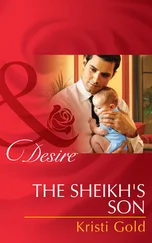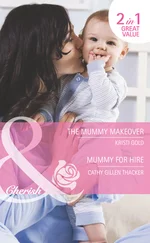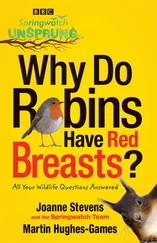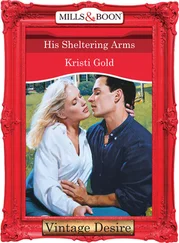Women in their twenties and thirties need to take breast health more seriously than they did when they were younger. If this is you, do your BSE once a month, one week after your period starts or the first day of every month if you do not have a period. Visit the gynecologist for an in-office manual exam, called a clinical breast exam (CBE), every three years, plus schedule a genetic counseling and risk assessment visit if it’s appropriate due to family cancers. Women under the age of forty with breast cancer have more aggressive tumors, so it’s crucial to stay aware.
A decade or two later, in your forties, continue doing a BSE once a month, but start seeing your gynecologist annually for a CBE for the rest of your life. You’ll also need to add a mammogram once a year, and if your breasts are dense, get an ultrasound too. And from here on out, that’s the deal, ladies, whether you’re in your fifties, seventies, or nineties.
If you’re considered high risk , we layer a little extra on top of all this advice. Various factors determine what makes a woman high risk, with the most outstanding being whether any marker lesions have been identified in your own breast tissue, and how many of your relatives have had breast cancer, especially under age fifty. If this sounds like you, take our anonymous, free genetics quiz at pinklotus.com/genequiz. Talk to your doctor about more frequent testing beginning ten years prior to the age of your youngest relative with cancer, and be sure to inquire about CBE twice a year, annual mammograms, and possibly ultrasound and/or breast MRI. You might also want to discuss the benefits of risk-reducing medications and operations. More on this in part 3.
WHAT IT MEANS TO LOWER YOUR RISK FACTORS
We’re going to spend a lot of time discussing risk factors for breast cancer in this book, so I want to be sure you understand what I’m talking about straight away. Simply put, a risk factor is anything that increases your chance of getting a disease, but does not definitely cause the disease. We don’t understand all of what causes breast cancer, so it’s impossible to eliminate every last variable and declare, “There, I prevented it!” with the same assurance that you could cry, “Five in a row. Bingo!” In that way, prevention doesn’t exist, but risk reduction does—and you, my friend, are in the driver’s seat.
Think of it this way: driving fast doesn’t automatically mean you will have a car accident, but it certainly increases the odds. Car accidents are caused by the collision of a vehicle with something else, and driving fast is just one risk factor for collisions. Deciding to drive fast backwards while also texting on a dark road in the rain combines multiple risk factors for a collision, but the actual cause would still be the undeniable imprint of that tree trunk smashed into your car trunk.
So how do you avoid colliding with breast cancer? Know your breasts, understand what they’re about, and take good care of them. This last point includes making the strategic and rather simple dietary and lifestyle improvements I outline in this book. After all, as I mentioned in my intro, researchers find that among women who, prior to menopause, (1) exercise, (2) don’t drink alcohol, (3) don’t smoke, and (4) shift their diet away from meat and dairy toward whole food, plant-based eating slash their odds of getting breast cancer in half. And postmenopausal women’s odds are sliced by 80 percent. In the medical world, this represents an incredible triumph when you consider that women endure chemotherapy for a mere 10 percent average improvement in survival over those skipping chemo.
How has all this powerful information eluded you so far? It’s hardly your fault. Evidence-based advice on breast health, particularly when it comes to cancer prevention, is publicly doled out in drips and drabs—a magazine article here, a brief morning show segment there. And when we do hear a tip, it’s often in isolation and gets lost in the shuffle of everyday life. So you might find out that consuming cinnamon improves breast health, but who, with so many spinning plates, remembers to make this part of her daily diet—and without guidance, who actually knows how? Our daily habits are set in stone or bring us comfort, so it’s hard to make changes to an established routine. But I will show you how.
I also need to point a manicured finger at our flawed educational system. During my four years of undergrad, four years of med school, five years of general surgery training, and my surgical breast fellowship, nutrition was a fleeting mention in the form of the Krebs cycle in the middle of one lecture—and for many of us physicians, that was twenty to forty years ago. Most doctors do not explore the science of eating or the impact of lifestyle choices to the degree that knowledge affects their own behavior , let alone yours. I know this is true because when I shared some of this book’s content with my cancer patients, countless times I heard, “Wow, I had no idea. You know, I asked my doctors what I should do and eat now that treatment has ended, and they just told me, ‘You did everything you were supposed to do. You’re fine; don’t worry about it. Live your life.’” Not so, my friend. You’re not done yet.
Even when doctors do recognize the nutrition–illness connection, part of the reason they don’t tell you much is a reimbursement issue. Just as insurance companies don’t pay for your gym membership, weight-loss program, or stress management course, they don’t reimburse us doctors to spend time detailing preventive strategies. Doctors already need to stay up-to-date on what you expect from them, like screening guidelines and the best treatments for all the diseases they handle, which leaves no time for researching and dispensing extra freebies like, “Hey, did you know that three cups of green tea a day cuts breast cancer risk in half?” (By the way, did you?)
So when you put all that together, the question isn’t how did you not know this—but how could you have possibly known at all? Nobody’s taught you to connect food and lifestyle to breast health the same way you might relate it to, say, the strength of your heart or brain. Which is funny, because your breasts coexist with the same body as these vital organs. The good news is that food science matters now more than ever, as the global health outlook becomes increasingly dismal. Both patients and doctors are becoming more interested in how nutrition and lifestyle affect risk reduction, causation, and reversal of disease processes.
Of course, my central concern right now is your breasts (well, and your heart, since the number-one killer of women is heart disease; lucky you, my advice helps both problems). Up to 90 percent of the risk factors that determine optimal breast health lie entirely in your hands—so you are in control of you. Not your doctors, genes, or fate. You are with your breasts all day long, every single day. If you spent that much time with anything or anyone—a child, a spouse, a pet, even a car—you’d make sure they were in good shape.
Why treat your breasts any differently?
TRUE, THAT’S FALSE
In coming chapters, we’ll discuss how to keep your breasts and body as healthy as they can be, but first let’s set the record straight on what does not cause breast cancer. Myths abound out there that puzzle my patients and the public, and they don’t hold up in studies. (Quoting studies is a theme you’ll find throughout this book because the pervasiveness of myths is such a peeve of mine.) If you’re aiming for optimal breast health, there’s no room for bogus claims.
CHAPTER 2
Debunking Breast Cancer Myths
In this book, we’ll talk at length about how to eat, drink, exercise, and behave in ways that optimize breast health and reduce your risk of cancer—all supported by credible, exciting research. But for as much useful information that’s out there, way too many myths persist that confuse and distract us from what we need to know. I can’t tell you how often patients come to me paralyzed with fear because they’ve read or heard that something they’ve done in the past—or currently do—will ruin their health. Genetic myths, hormone-related myths, dietary myths, environmental myths: I could play volleyball all day with all the false ideas flying around—set up, smash, repeat.
Читать дальше












